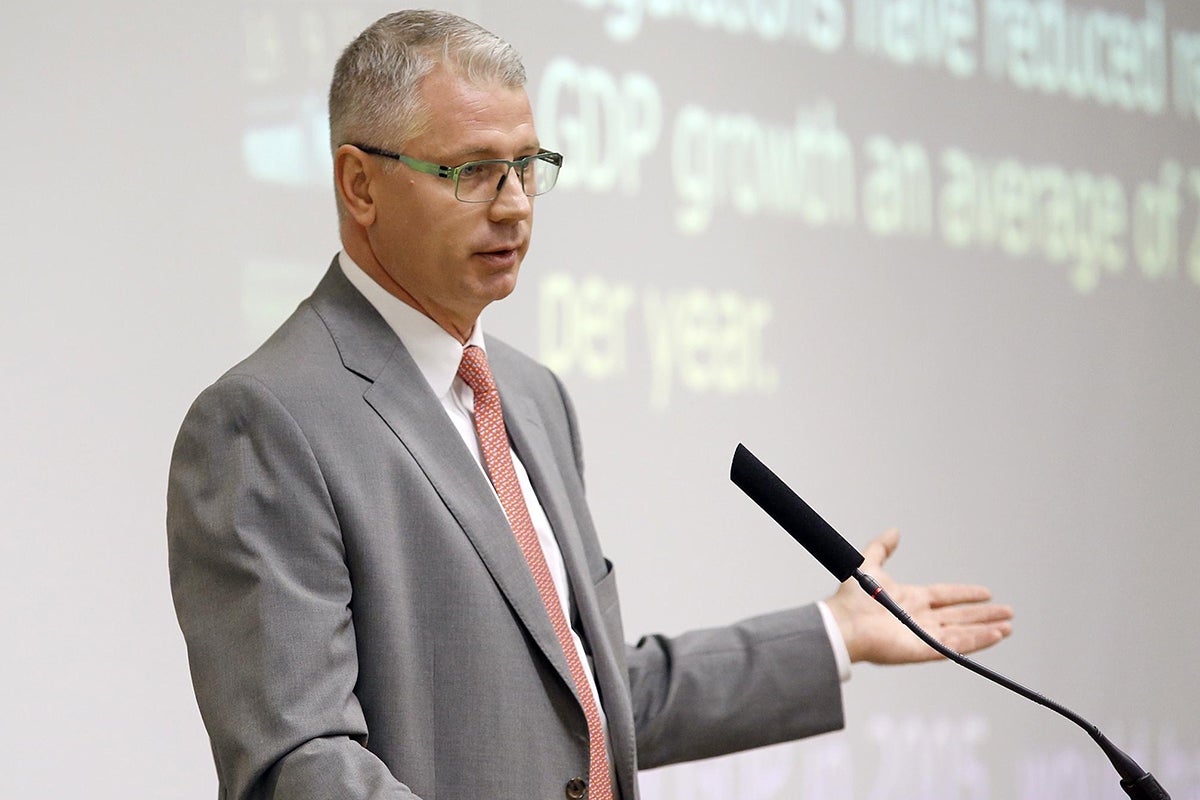As the country continues to reopen and Election Day looms, U.S. consumers are fueling the recovery, says Sean Snaith, national economist and director of UCF’s Institute for Economic Forecasting.
“The self-inflicted economic shutdown has had a far-reaching impact,” Snaith says, “but as the pandemic fades, consumer confidence is rising and household balance sheets are recovering.”
Lower oil and gasoline prices and historically low interest rates will continue to power consumer spending growth, particularly in 2021, according to the latest U.S. Economic Forecast from UCF. Consumption spending is forecasted to shrink by 3.3 percent in 2020, then accelerate to 6.5 percent in 2021 before easing to 2 percent in 2022 and 1.4 percent in 2023.
With less than a week to go before Election Day, Snaith says the current forecast assumes the economic policies of the incumbent Trump administration will be in place throughout the forecast horizon.
“This is certainly not an endorsement,” Snaith says, “but an assessment based largely on two factors: incumbent candidates have historically fared well in re-election campaigns and a disparate level of enthusiasm from the supporters of each candidate.”
According to the third quarter forecast, the U.S. economy, as measured by Real Gross Domestic Product, is expected to be -2.9 percent in 2020 before accelerating to 5 percent in 2021 and then easing to 1.8 percent in 2022 and 1.7 percent in 2023.
Snaith predicts payroll jobs will contract by 5 percent in 2020, before growing by 3.7 percent in 2021, 2.1 percent in 2022 and 1.9 percent in 2023.The headline unemployment rate is expected to decline to 4.2 percent in 2023. Job growth will help ease the damage to the labor market from the lockdown, but the road to recovery for the labor market is expected to take several years.
The housing market continues to progress and will improve through 2022. Ultra-low inventories and mortgage rates will underpin a late-cycle housing boost. The forecast notes housing starts will dip from 1.36 million in 2020 to 1.31 million in 2023.
For the complete U.S. report from the Institute for Economic Forecasting, visit business.ucf.edu/centers-institutes/institute-economic-forecasting/.




